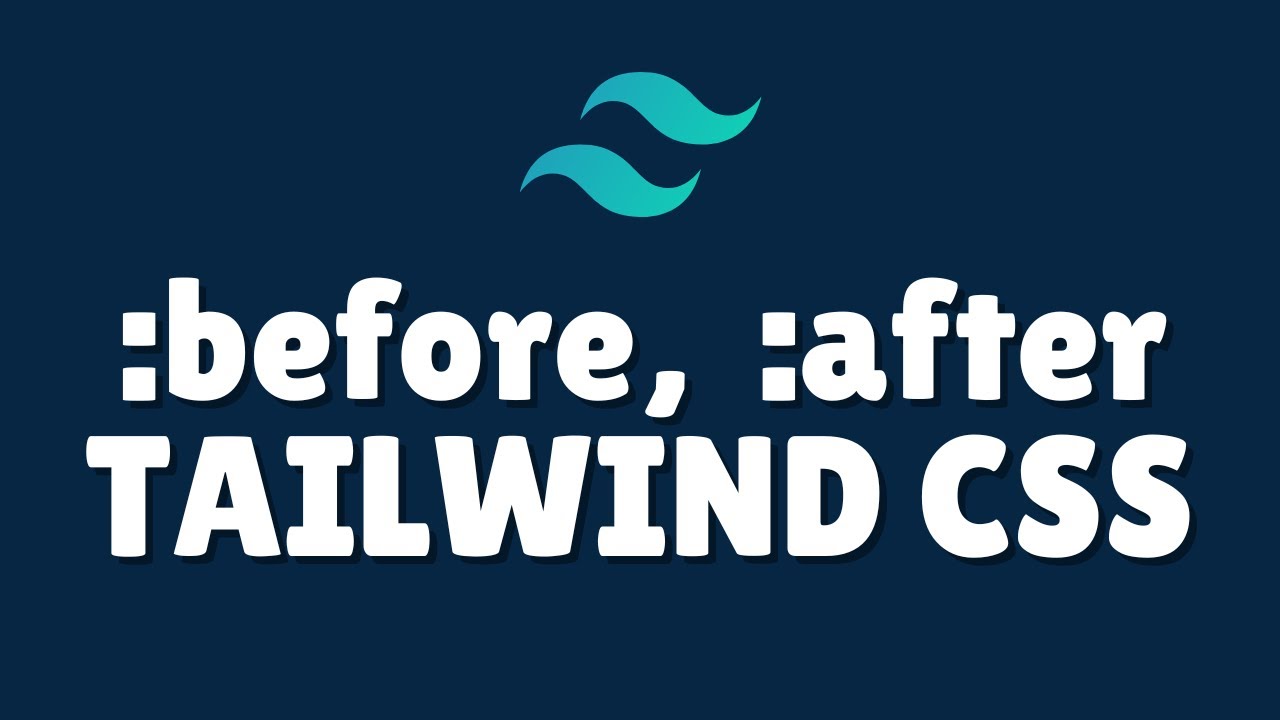How to use before and after in Tailwind CSS?
Hello, fellow developers! Welcome to another AyyazTech tutorial on Tailwind CSS. Today, we're focusing on a topic that might seem basic but can bring an extra flair to your designs—the ::before...

Hello, fellow developers! Welcome to another AyyazTech tutorial on Tailwind CSS. Today, we're focusing on a topic that might seem basic but can bring an extra flair to your designs—the ::before and ::after pseudo elements. Understanding and harnessing these elements is crucial when you're aiming for that extra layer of detail in your CSS designs. This article is a comprehensive dive into using these pseudo elements effectively with Tailwind CSS.
Video Resource: Check out the video tutorial for this topic on our AyyazTech YouTube channel. And if you're new to Tailwind CSS, be sure to explore our Tailwind CSS Playlist for more helpful tutorials.
Introduction to Tailwind CSS and Pseudo Elements
Pseudo elements like ::before and ::after allow you to insert content into your HTML elements without actually altering the HTML. These are often used to add cosmetic features to elements, and Tailwind CSS provides utility classes that make using these features straightforward.
Basic Usage of Pseudo Elements with Tailwind CSS
To start with, Tailwind gives us the content-xxx utility to set content for our pseudo-elements, which can be combined with before: and after: variant modifiers.
For example, consider the following HTML:
<a href="#" class="text-sky-400 after:content-[‘hello’]">My Link</a>When rendered, this will attach the word 'hello' after "My Link" without actually changing the HTML. You can also inspect the anchor tag using the browser's developer tools to see how Tailwind adds this content.
Adding Content from an Element's Attribute
To pull content directly from an element's attribute, Tailwind offers the content-attribute utility.
Here's how you can use it:
<div class="before:content-attr(data-before)" data-before="This is before content">My Div</div>When rendered, "This is before content" will appear before "My Div" text in the rendered HTML.
Handling Strings with Spaces and Underscores
Tailwind CSS usually doesn't support strings with spaces when defining them in the utility classes. However, you can work around this limitation by using underscores to represent spaces:
<div class="after:content-[‘Welcome_back’]">My Text</div>In the above code, "Welcome back" will be appended after "My Text" with a space between "Welcome" and "back".
If you need to include an actual underscore in your string, escape it using a backslash:
<div class="after:content-[‘Welcome\_back’]">My Text</div>Extending Default Theme and Custom Content in Tailwind's Config File
For those who require advanced customization, Tailwind CSS allows you to extend its default configuration. Open your tailwind.config.js file and add your custom content utilities.
For example:
module.exports = {
extend: {
content: {
'link-icon': "url('/icon.svg')"
},
},
}Now, you can use this in your HTML as follows:
<div class="before:content-[link-icon]">My Text</div>This would render the SVG icon before "My Text."
Recap
Using ::before and ::after pseudo elements in Tailwind CSS can really elevate the look and feel of your web pages. Tailwind CSS simplifies the use of these complex but powerful features of CSS.
Closing Remarks
We hope you've found this tutorial useful! If you liked it, make sure to give us a thumbs up and don't forget to subscribe to AyyazTech for more quality programming tutorials.
Until next time, happy coding!